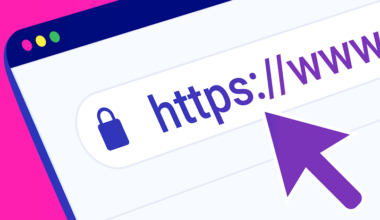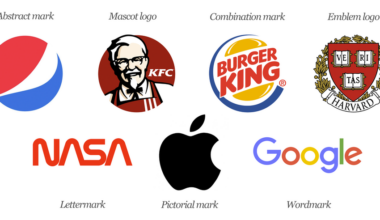EASY WAYS TO DRIVE TRAFFIC ON YOUR WEBSITE
Do you know that 92% of small business owners who use social media consider it important for their business. Why?
For starters, social media can help you build brand recognition, foster a community around your business, and grow your bottom line.
And, with the number of global social media users expected to hit 2.5 billion this year, there’s never been a better way to find and connect with your ideal audience.
As of 2020, there are over 1.7 billion active websites worldwide. Meaning there is increasing competition on the internet for your brand to be seen. So how do you separate your business from the others out there? It starts with getting people to click. Attracting customers to a website is not as complicated as it seems, in fact, there are several techniques you can apply to the daily running of your business – all of which are designed to increase traffic to your site.
This article focuses on steps you can take when you’ve already set up a successful website, blog, social media platforms, etc. Just getting started with your website and marketing strategy? Then we suggest taking a look at these high-level marketing efforts instead.
1. Optimize Your Social Media Profiles:
Social media profiles play a crucial role in brand building and recognition. A good social media profile can drive a good amount of traffic to your website. Optimizing your social media profiles are as important as optimizing your website’s SEO. Ensure your social media biographies include relevant keywords. Also, make sure you do not miss any information while filling your profile details.
Your website SEO will rank good if you add it links in your social media profile biographies. Also, this is an essential rule for good SEO on your website.
When it comes to attracting customers, the devil is in the detail. First, make sure there is a link in your Instagram bio and refresh this every time you update a post. For example, if you are releasing a new product via Instagram, add in the status post that it is available through the “Link in bio.”
Next up, we suggest you start engaging with industry leaders. While this may seem daunting at first, sharing a Facebook post by the CEO of a blue-chip company enhances your chances of being seen on the web.
Thus, social media profiles can be a great asset to brand awareness. For an optimized website, a streamlined social media profile with the right set of keywords and information is a must.
2. Promote your blog content.
You put tons of effort into writing content for your blog, and want the world to see your latest masterpiece. But before you know it, two months have passed and only few people have feasted their eyes on it.
What point is there for creating great content if people aren’t going to read it? You can fix this by promoting your posts on social media.
It’s been found that brands who create 15 blog posts per month (and share that content through social media) average 1,200 new leads per month – proving it’s not impossible to get your content seen by ideal customers.
Of course, you don’t have to create 15 blog posts per month before you can share your content on social media and start seeing tangible results. You can start promoting at any point, with any piece of content.
After all, you’re always building your profile, and recent followers might’ve missed content you published weeks ago.
Start by creating a social media schedule that promotes your old content. You can do this automatically using tools like Buffer, Social Jukebox, and Hootsuite.
You can also repurpose your blog posts to get more use out of them. Options include:
- Quoting different snippets of your article
- Asking your target audience questions that are relevant to the post
- Varying your choice of images
- Changing the headline of your article every 2-3 months
Promoting your blog content with a variety of messages will keep your feed fresh and attract your target audience to your website.
Action Step: For each blog post on your site, create a document with an additional 5-10 blog post titles. Add these to your social scheduling tool, along with the URL of your article, to drive traffic back to old blog content.
3. Engage with Your Target Audience Consistently:
Social media helps you connect to your target audience directly. You can interact with your audience, get feedback in real-time, and better your customer experience. Consistent engagement with your audience can boost traffic to your social media profile and website. This also improves the opinion of audiences in the company’s perspective.
One of the most vital aspects of social media management is to keep your audience consistently engaged. Digital engagement with your audience is a seamless process and should not be combined with self-promotion.
For a successful audience engagement with your brand or website, you need to consider several points in mind:
- Social media is not a one-way strategy. It is more of a two-way street
- Do not ignore your audience. Keep them engaged. Or else you might lose them in the process
- Only 11% of customers receive replies from online brands
- Nearly 34% of customers prefer social media for customer care
Once, you learn the art of using social media management tools, you can stay at the top of the social game. Lead through your single-stream inbox with social events, and a niche content in your social feeds.
Gaining your audience’s visibility will take time, but you need to put efforts to drive traffic continuously.
Respond to tweets and comments mentioning you and your business.
This one should go without saying, but all too often businesses miss the mark. When someone tweets to or otherwise engages with your business, engage back!
Their interest creates the perfect opportunity for you to demonstrate your business’s value. In so doing, you may even generate a click to your website or a conversion to a sale.
Don’t ignore your notifications and mentions!
Search for relevant hashtags and spark conversations.
If you’re an authority in an industry or niche, pay special attention to hashtags and discussions. Use relevant hashtags when sharing your own content, and spark up conversations with people who include them in their social media posts.
Hashtagify is an awesome tool to find hashtags you may not have spotted.
Each of these hashtags may create opportunities to link to a resource on your website, but it’s important that your conversations and interactions are genuine.
People will appreciate a relevant link far more than one that seems too much like an advertisement.
Contribute to relevant forums.
Forums are online communities that ask questions, offer knowledge and share links to content that’s relevant to their niche.
You can find them on Inbound.org, Quora, Reddit, and StumbleUpon, with industries ranging from digital marketing to kittens.
The people engaging in these forums are dedicating their time to it. They want to learn more, and talk about the subject with other like-minded people.
Why not position your content in front of these people to drive traffic back to your site?
4. Focus on Sharing Visual Content:
As per the factual figures, visual content can get you more likes and shares than the ordinary content. Invest time in creating visuals that speak volumes about you, your brand, and your niche products. Make sure your visuals are too unique to get unnoticed. Later, focus on sharing the same with your target audience.
The main idea of creating visual content is to obtain social media visibility. To create the out of the box visuals, here are some key points to include:
- HD photography
- Vibrant colors
- Well-designed layouts
- Well-planned visuals that deliver to the point information
- Visuals that tell stories
- Visuals focusing on services and products
5. Post when your audience is active.
What good is posting on social media if your target audience isn’t online to see it? Sure, you might get some hits, but are they likely to care what you have to say? Or will they only contribute to your ever-increasing bounce rate?
The best time to post on social media is when your target audience is most active – their “peak time.”
When initially building your social strategy, follow these general guidelines for when it’s best to post on social media:
Once you’re more established, start testing the waters to see what times drive the most engagements and click-throughs.
Followerwonk is a fantastic (free!) tool that can help with this step. It determines what time of day your audience is most active, allowing you to tailor your posting schedule around their daily routines.
Simply hit the Analyze tab, enter your Twitter handle and select “Analyze their followers”.
6. Post Consistently:
Every social media user desire to achieve accountability of a good list of followers. Posting regularly on your social media can help you develop an excellent social media marketing strategy. Posting frequency and the number of followers and likes you gain depends on certain factors like:
- Region/Time zone
- Target Audience
- Days in a week
- Content
- Hashtags
- Profile bios
According to stats, different social media have different posting frequency.
- For Twitter, the minimum posting frequency is 15 tweets daily
- For Facebook, the minimum posting frequency is one post daily
- For Instagram, the minimum posting frequency is 1-2 posts weekly
For this, you must measure the best frequency with your audience. You can also monitor the posting frequencies of other brands and your competitors.
This helps you define your frequency to increase social media engagement.
7. Optimize your calls-to-action.
Ever write the perfect tweet, only to check back and see how little engagement it actually received?
It’s disappointing, I know.
You can increase how many clicks your social media shares receive by using calls-to-action in your post.
Calls-to-action tell a user exactly what you want them to do. We use them in blog content and landing pages all the time, but they’re also great for convincing your audience to click-through to your website on social media!
Add phrases like:
- “Click Here”
- “Read More”
- or “Visit Our Site”
They’ll persuade readers to actually click on the content you’re sharing, driving up your referral traffic from each platform.
Make sure, however, that you’re only adding CTAs to content that will benefit your audience. We don’t want it to look like you’re sharing clickbait, after all.
Action Step: Jot down a list of calls-to-action you can test on your social profiles. Use each one at least 5 times, and record metrics (such as engagement, link clicks, and profile visits) for each variation. This will show you which works best for your audience.
8. Run Q&A Polls and Social Media Contests:
Social media contests and polls are interesting and exciting ways to engage your audience. Such activities also help you improve the communication gap between you and your target audience. Running quizzes, polls, and contests can indulge your audience in sharing, talking, liking, and following. This also makes them aware of your brand, website, and products.
Here are some powerful tips on how to host such activities.
Instagram:
Instagram has powerful and interactive features that help you connect with your audience. Go live on your social media, create polls in your story and use hashtags. You can use hashtags, or ask them to follow or tag your profiles. However, more importantly, create links that link to your site. Remember, we discussed why backlinks are an important part of your social media strategy.
Twitter:
The Twitter poll is an interactive feature on Twitter that helps you conduct polls. This helps you interact with your audiences and know their opinions and thought process. Another exciting and engaging feature is Twitter Q&A.
These features encourage your community to connect with you. More importantly, they build brand awareness and promote your products.
In Conclusion, Social media marketing strategies are great, but they take time to come into effect. These proven strategies are sure to reap benefits in the long term.




